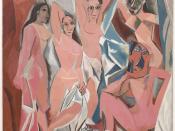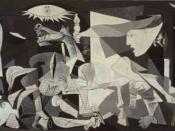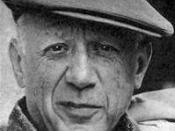Examine the ways in which both Picasso and Braque were able to revolutionise traditional approaches to the practice of painting.
Before the twentieth century, art was recognized as an imitation of nature. Paintings and portraits were made to look as realistic and three-dimensional as possible, as if seen through a window. Artists were painting in a flamboyant style. French Post-Impressionist Paul Cezanne?s flattened still lives, and African sculptures gained in popularity in Western Europe when artists went looking for a new way of showing their ideas and expressing their views. Pablo Picasso and Georges Braque were two influential artists who opened up a new phase in history of art. Their way of looking at the exterior world, the means they used of recording their ideas about it, even their concept of what a painting was, all these things were different from anything that had gone before them. And they were reacting not only against the art of the past fifty years but also against the techniques and traditions of vision that had shaped Western painting since the scientific discoveries of the early Renaissance.
In 1907 Pablo Picasso created the painting Les Demoiselles d?Avignon, depicting five women whose bodies are constructed of geometric shapes and heads of African masks rather than faces. The first impression made by the Demoiselles is one of violence and unrest. Indeed, the savagery of the two figures at the right-hand side of the painting (which is accentuated by the lack of expression in the faces of the other figures) would justify its classification as one of the most passionate products of twentieth-century Expressionism. But, it is incontestable that the painting marks a turning point in the career of Picasso and, moreover, the beginning of a new phase in the history of art. The squatting figures...


